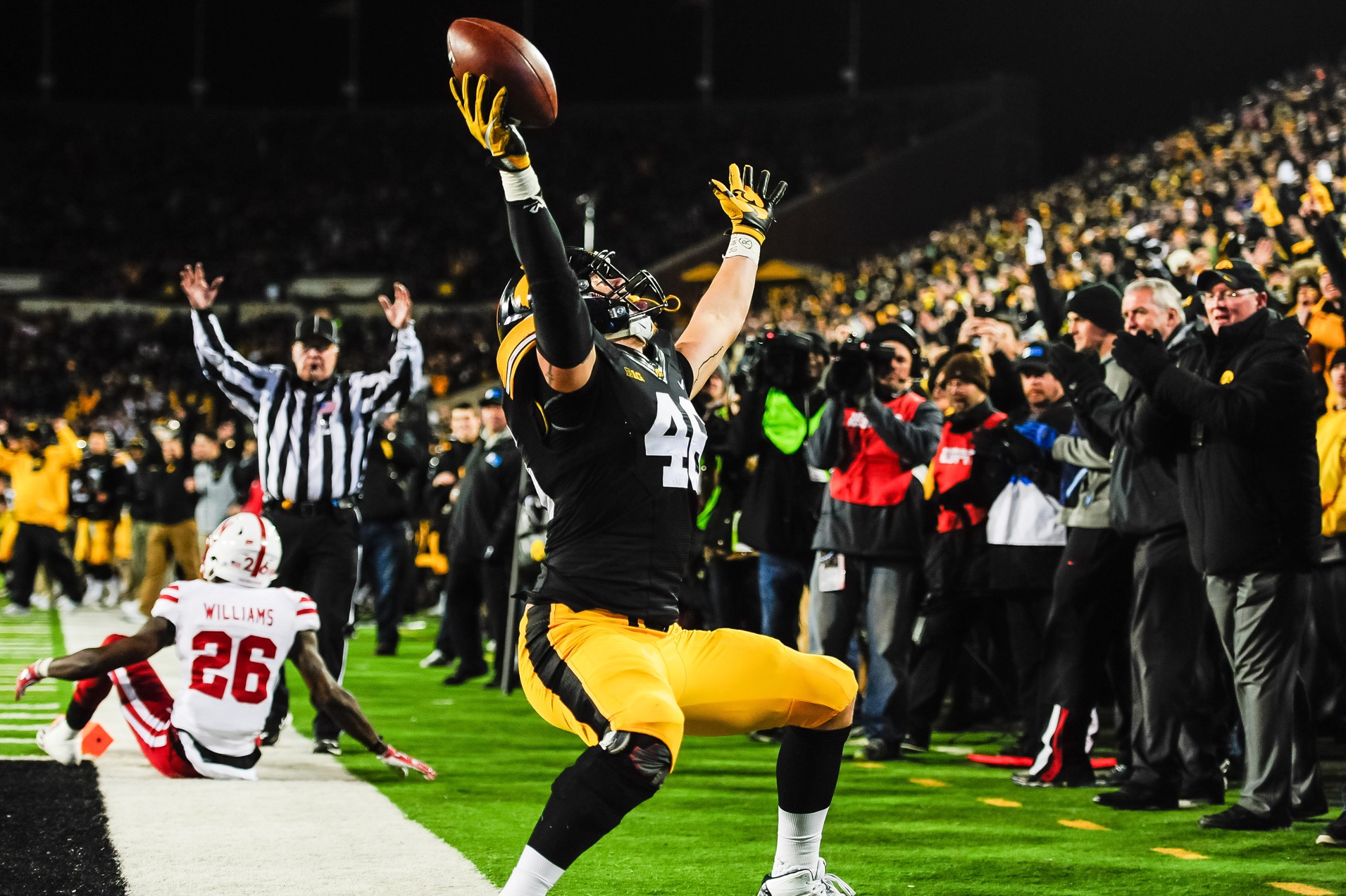Entering his eighth year with the San Francisco 49ers, George Kittle has become synonymous with tight end greatness in the NFL. However, his stardom began on the college stage.

Where Did George Kittle Go to College?
Kittle was born in Madison, Wisconsin, but his family moved to Iowa shortly thereafter. He went to Iowa City West High School as a freshman before transferring to Cedar Falls High School the following year. However, Kittle had one more stop on his high school journey: Oklahoma.
His father, Bruce, took an assistant coaching job under his former Iowa Hawkeyes teammate Bob Stoop at Oklahoma in 2010, forcing the family to pack their things once again.
Kittle attended Norman High School, helping the team reach the state playoffs in back-to-back seasons. Yet, he saved his best for last, earning all-state, all-district, and all-conference honors as a senior.
Playing tight end, wide receiver, linebacker, and safety, Kittle scored five touchdowns on just 26 receptions on offense and snatched five interceptions on defense. Adding to his allure, he also thrived as a power forward for the basketball team.
Despite his on-field success and familial lineage, Kittle didn’t receive much fanfare on the recruiting trail, with Air Force being his most prominent scholarship offer … until Iowa came along.
“I was just trying to get a shot somewhere,” Kittle said. “I got an offer from Air Force after my junior season — maybe was, like, right at the start of my senior year — and then I didn’t get another. I had some interest in Dartmouth because I was pretty good in school, and then Weber State offered me real late, like in, say, November, December. Basically, I had zero talk with Iowa.
“I know my dad had talked — I don’t know if it was [Kirk Ferentz] or someone — they were like, ‘Definitely he has a walk-on spot here.’ There were a couple of JUCOs (junior colleges) that we were looking at with the hope I could go gain some weight.”
MORE: Simulate the College Football Season with CFN’s College Football Playoff Predictor
Kittle’s luck shifted when Ferentz unexpectedly called him on the morning of national signing day in the February before his graduation.
“There were a couple of guys that hadn’t committed yet, so I thought I might get lucky,” Kittle said. “I definitely got lucky. I got that call from Kirk, and that was fantastic. I will forever be thankful.
“I’m just appreciative of every opportunity that I ever got. Everyone has these chips on their shoulder for not getting offers or not getting drafted. I’m just more of, you can go into it with an angry chip on your shoulder or go into it with a love for the opportunity. That’s kind of how I’ve always played, and it’s worked pretty well for me.”
After being down the depth chart in his first two seasons, Kittle’s role expanded in 2015, as he finished with 20 receptions, 290 yards, and six TDs, which ranked sixth among all pass catchers in the Big Ten.
A sprained foot slightly derailed a promising final season, but Kittle still finished with a 22-314-4 receiving line, earning honorable mention All-Big Ten recognition. While his receiving numbers aren’t out of this world, 49ers fans know how much Kittle impacts the game as a run blocker.
As one of the premier tight end prospects, Kittle earned an invite to the NFL Scouting Combine in Indianapolis, where he impressed by finishing third among TEs in the broad jump (11’0″), fifth in the 40-yard dash (4.52), and sixth in the vertical jump (35″).
The 49ers selected Kittle in the fifth round with the 146th overall pick in the 2017 NFL Draft, reuniting him with Iowa teammate C.J. Beathard, who they chose in the third round.
Kittle’s path to the NFL was anything but conventional, but his perseverance and dedication transformed him from a near walk-on to one of the best all-time TEs to grace the field.
College Football Network has you covered with the latest news and analysis, rankings, transfer portal information, top players, the 2024 college football season schedule, and much more!

